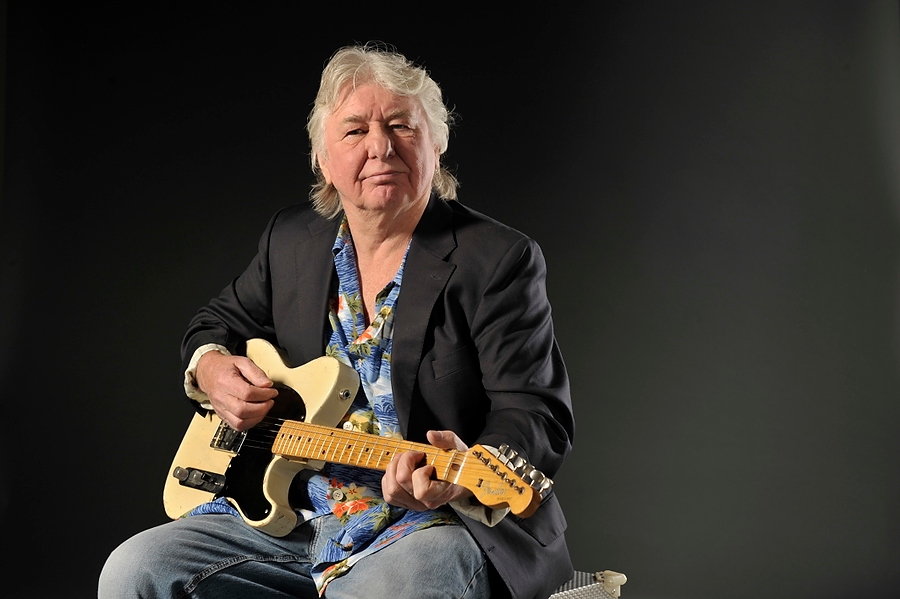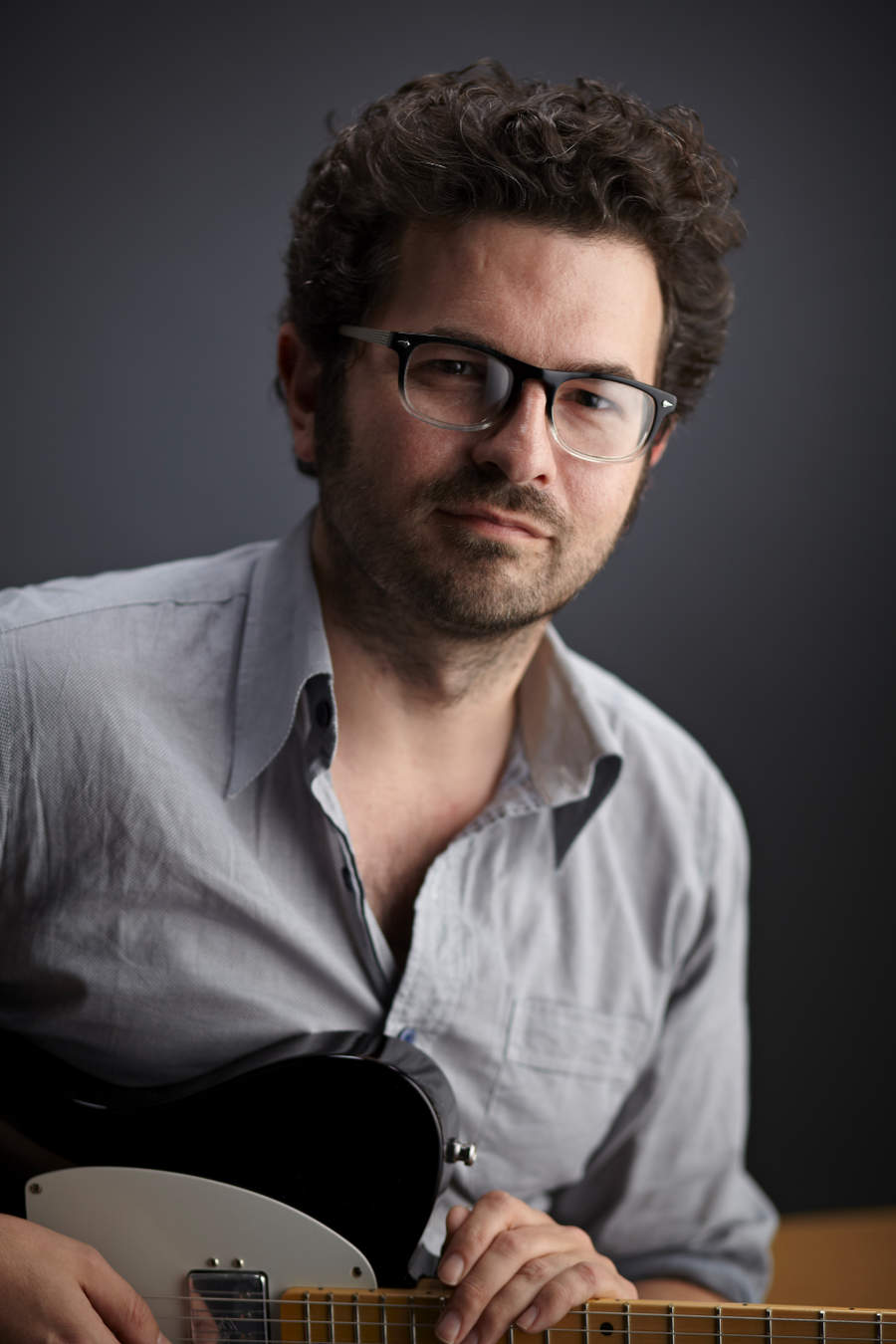Interview: Mick Ralphs of Mott The Hoople
Mick Ralphs on the guitars and amps behind Mott The Hoople's classic rock sound

As guitarist in Mott the Hoople, Mick Ralphs's incisive guitar lines helped define the sound of 1970s rock, notably on their enduring hit All The Young Dudes, penned by David Bowie. Despite that, he was a latecomer to the guitar, he explains.
"I didn't actually start playing until when I was 18 because the music when I was growing up was all a bit 'bubblegum': like Cliff Richard and Bobby Vee. And I didn't really like all that until I heard Green Onions and I thought, 'Bloody hell, what's that?' I eventually found out it was by Booker T and the MGs, and then I got into that."
Despite Mick's indifference to the pop sounds of the fifties, the American-built guitars that bands like The Shadows used did excite his interest.
"I remember Cliff Richard went to America and brought back a Fender Strat for Hank Marvin and it was like something from outer space. So although I didn't like The Shadows, I had a picture on my wall of the pink Strat that he had. I used to like to just look at it - because you couldn't get them in England in those days."
Mick's affinity for Fender guitars served him well when he left Mott The Hoople in 1973 to found Bad Company with Paul Rodgers of Free. Mick explains that he used a '57 Fender Esquire tuned to open C for Bad Company's classic blues-rock anthem, Can't Get Enough.
"Because it's just one pickup it's really raunchy - you get more gain out of it, I think. Also, the neck pickup on a Tele has always been a waste of time, as far as I'm concerned: it's got no balls to it. I'm not a country picker really - I like a nice, beefy, raunchy sort of sound. I saw an old clip of Muddy Waters the other day - and he was playing an old Fender Esquire. I like the simplicity of it: two knobs, one pickup."
Gutsy Gibsons
Despite that, Mick says that it was Gibson solidbody guitars and non-master volume Marshall amps that provided the gutsy guitar tones of his earlier work in Mott The Hoople, all the way back to the band's earliest years when it performed as The Shakedown Sound.
Want all the hottest music and gear news, reviews, deals, features and more, direct to your inbox? Sign up here.
"In those days I was using an 'SG' Les Paul before they became valuable," he explains, referring to the short-lived SG-shape Les Paul model that Gibson made from 1961 until Les requested that his name be removed from the line and it was formally renamed the 'Solid Guitar' in 1963. He later moved away from humbuckers to P-90 equipped Les Paul Goldtops and Juniors.
Fittingly, Mick will be using Gibson electrics for the November shows with Mott The Hoople, but he says that a chambered Custom Shop Les Paul is his main squeeze these days - a lightweight choice prompted by his experience of trying a number of vintage Les Pauls over the years.
"I've had [late-'50s] sunbursts over the years," he explains. "Some have been great, some haven't been so good. But I found the lighter ones had a much sweeter tone. The last sunburst I bought was in the '70s in a shop in New York. And it was $2,100, which I thought was an absolute fortune. I felt a bit guilty about buying it - but it's nothing compared to what they go for these days."
Mick adds that while he's a fan of golden-era Gibsons, he's wary about the near-religious veneration that has sprung up around vintage 'bursts.
"My friend who's a collector has about eight and I said 'Do you ever play them? And he said 'No,' and I said, 'Then what's the point? They're guitars: they're meant to be played. Don't put them in a glass case! It's a travesty."
Blues Breaks
Mick uses his chambered Custom Shop Les Paul not only for the big Mott The Hoople shows but for his Blues Band, which typically plays more intimate club dates. Accordingly, he plays it through a hand-wired combo rather than the reissue Marshall JTM45 heads he favours for Mott The Hoople gigs.
"With my blues band I use a little amp called a Holland which is quite rare, but it's got the most wonderful tone. It's based on an old Fender design - it's probably what you'd call a boutique amp, like Matchless, but they only made them for a short period of time. It's only 40 watts, so it's no good for big gigs but it's got the tone and it's wonderful."
Check out issue 375 of Guitarist magazine, on sale 15 Nov, to read our full interview with Mick, in which he shares his recollections of working with David Bowie on Mott The Hoople's landmark track All The Young Dudes, explores his vintage guitar collection and describes his years working with Paul Rodgers in Bad Company.
- Mott The Hoople are set to play one of their biggest UK shows ever at the O2 Arena London on Monday 18 November as part of a full UK tour. For information and tickets visitwww.aeglive.co.uk
Jamie Dickson is Editor-in-Chief of Guitarist magazine, Britain's best-selling and longest-running monthly for guitar players. He started his career at the Daily Telegraph in London, where his first assignment was interviewing blue-eyed soul legend Robert Palmer, going on to become a full-time author on music, writing for benchmark references such as 1001 Albums You Must Hear Before You Die and Dorling Kindersley's How To Play Guitar Step By Step. He joined Guitarist in 2011 and since then it has been his privilege to interview everyone from B.B. King to St. Vincent for Guitarist's readers, while sharing insights into scores of historic guitars, from Rory Gallagher's '61 Strat to the first Martin D-28 ever made.
